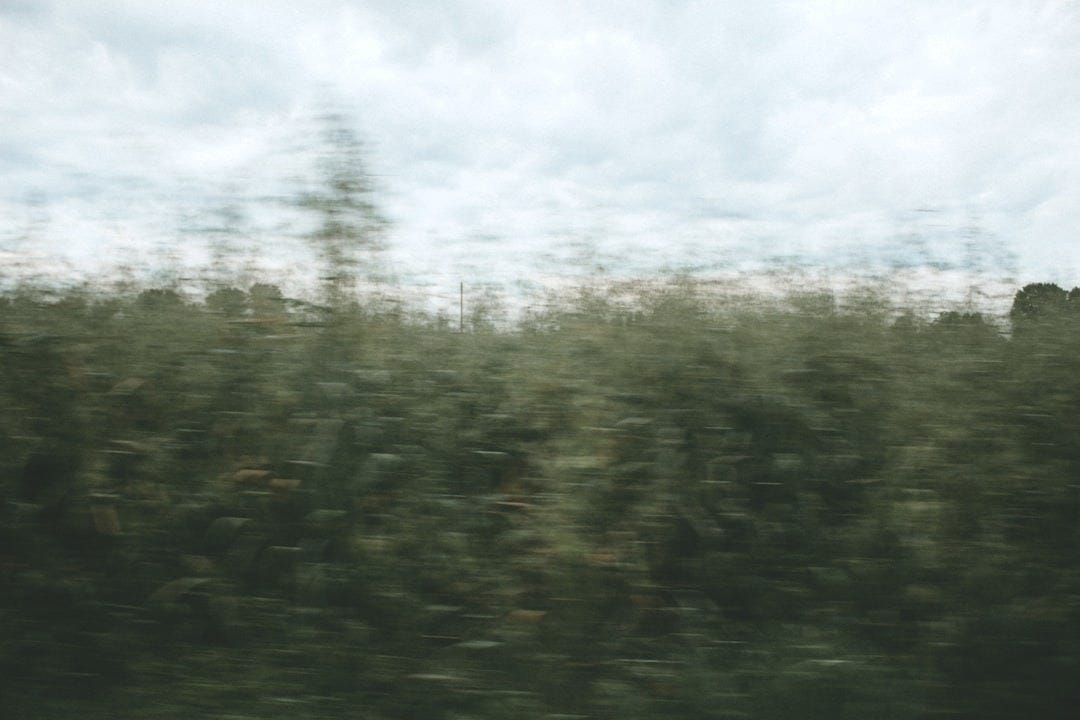Some weeks move with such speed and density it feels like living inside a browser with too many tabs open. Each one blinking and nudging, while dozens more clamor for space in your mind.
Lately, I’ve found myself toggling between work, family and life’s practicalities at a pace that feels unsustainable. It isn’t that anything is dramatically wrong, as a friend gently pointed out to me, it’s simply that everything is happening all at once.
And when that wave arrives, I know my tells.
More lists than usual. Skipping meals. Pushing off chores. Growing curt in conversations, forgetting the small kindnesses of “please” and “thank you.” My breath shallows, my sleep frays. And even this newsletter, something that brings me genuine pleasure, slips to the bottom of the list.
Of course, overwhelm isn’t my burden alone. Around me, I see people quietly carrying their own weights: caregiving, working, dealing with uncertainty, the mental load of planning and tending to so many moving parts. Layer on top the unrelenting hum of the world itself — news cycles that keep us alert but never settled, and the sense that something fragile and precious is under threat.
And it’s not only that these demands are so many, it’s that they rarely pause. Even when our bodies and minds are tired, the tasks and news keep circling, whispering that we should keep up. And so, little by little, our own rhythm is replaced by the beat of something outside ourselves.
It’s no wonder we lose track of our own footing.
Overwhelm as a Visitor
Here’s something I’ve learned, both from my own life and from coaching others:
Overwhelm isn’t who we are. It’s something that comes to visit. Sometimes like a soft fog; sometimes like a gust that slams the door open. But it doesn’t have to define us.
When we treat Overwhelm as a visitor, rather than something knitted into our identity, something shifts. We create a sliver of distance. Enough to take a breath and say, “I see you.” Enough to choose our next step, instead of being carried along by the current.
Try this simple exercise. Say these two sentences aloud:
“I am so overwhelmed today.”
“I feel Overwhelm’s presence today.”
Notice the subtle difference? The first assumes Overwhelm is part of you. Something fixed and hard to shake. The second allows for movement, for agency: “I feel her presence… and I can ask her to leave.”
This small act of naming is deceptively powerful. Overwhelm thrives on invisibility. When it stays unnamed, it shapes our days from beneath the surface — tightening patience, clouding judgment, draining the color from what normally brings joy.
But when we notice it, when we say “Ah, you’ve arrived”, we give ourselves permission to pause and possibly even to take steps towards change.
What Is This Pace Really Serving?
In that pause lies the possibility of choice: to slow, to soften, to ask yourself whether this pace truly belongs to you, or whether it’s simply the momentum of everything and everyone else sweeping you along.
The real invitation isn’t just to stop or to add “rest” to an already crowded to-do list. It’s to look gently and honestly at the rhythm you’ve fallen into. To notice where your own natural cadence has been overridden by someone else’s urgency.
We’ve all experienced it. You’re moving steadily through your day, ticking off your list, when suddenly something tugs you off course: an unexpected call from a colleague who needs your attention right now; a client asking for an updated draft; your child needing an early pickup from school; a loved one asking when you’ll visit next.
And almost reflexively, the “shoulds” arrive — those quiet insistent voices we don’t always speak aloud but carry all the same.
I should answer this tonight.
I should be able to handle this.
I should keep going; everyone else seems to.
But the real question isn’t whether you can keep going. It’s whether continuing at this pace really helps what matters most to you.
It’s the same quiet permission I wrote about in Permission to Wander: the choice to pause, step off the track, and ask: is this still the pace that feels right for me?

A Few Gentle Prompts
These aren’t meant to “fix” Overwhelm. They’re here to help you build a kind of map, so next time the visitor arrives, you know where you are, and where you’d rather be:
🌿 When Overwhelm visits, how does it show up in your body?
🌿 Can you tell the difference between your natural pace and someone else’s rhythm you’ve accidentally taken on?
🌿 Is there a moment in your day, however brief, where joy feels possible?
🌿 And when you do return to steadiness, what helped? A pause, a conversation, a walk, a few honest words on the page?
Holding these questions without rushing to answer is itself an act of kindness. A way to say: I may not have it all figured out, but I’m willing to give something new a try.
And next time Overwhelm visits, you might find that you recognize it sooner and then remember, even briefly, that you have other ways to move.
“Have patience with everything that remains unsolved in your heart… try to love the questions themselves.” Rainer Maria Rilke
Naming Is Not Weakness — It’s Wisdom
Even if you’ve learned to carry heavy loads, it doesn’t mean you’re meant to carry them alone. Naming Overwhelm, pausing, asking for help, from a friend, a partner, a coach, isn’t weakness. It’s wisdom.
So if Overwhelm is walking beside you this week, maybe let that be enough.
You noticed. You named it. Maybe you even thought to yourself: “Not now,” and asked for a little help in lightening your load.
And maybe, just maybe, that’s the beginning of finding your rhythm again.
What helps you notice when Overwhelm has arrived?
What helps you reconnect to your own rhythm?
I’d love to hear from you.
🌿 A Little Something Extra
When I feel life sharpening at the edges, I find myself drawn to softness — in words, in music, in images.
That’s partly why the artwork for this piece is of blurred nature: to remind us that clarity doesn’t always come sharply into focus. Sometimes it emerges slowly, softly, from the background — and sometimes it’s enough to sit with what’s beautifully unclear.
🎨 Inspiration came from Gerhard Richter’s abstract floral paintings, which blur and soften the natural world, inviting us to pause and look more closely.
📖 And from the moments of quiet kindness found in, The Boy, the Mole, the Fox and the Horse by Charlie Mackesy — an illustrated journey through gentle questions and reminders, especially this one. “Being kind to yourself is one of the greatest kindnesses.”







“The real invitation isn’t just to stop or to add “rest” to an already crowded to-do list. It’s to look gently and honestly at the rhythm you’ve fallen into. To notice where your own natural cadence has been overridden by someone else’s urgency.”
beautifully articulated, and my hope is that we can build societies that allow us all to fall back in sync with our natural cadence. I know many people are feeling the pull to slow down, myself included.